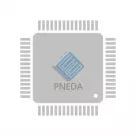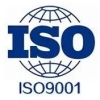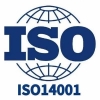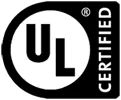Arm Breakthrough Automotive Technology: Key principles for Functional Safety

Today, the automotive industry is evolving rapidly, and functional safety is a top priority in the design and development process. You see, with the rise of electric vehicles and smart driving technology, traditional cars have turned into super complex electronic systems! These new devices make the driving experience better, but the safety requirements are also higher. As the world's leading semiconductor and software design company, Arm has made breakthroughs in the field of functional safety and become a hot spot in the industry with its strong technical strength and innovation drive.
Let's start with what functional safety is and why it's so important. Functional safety means that if a system fails or does not function properly, there must be a way to prevent or reduce possible injury or damage. That's a big deal in the auto industry! You see, the electronics, the sensors, the software components in the car, if something goes wrong, it can lead to a serious accident. For this reason, it is important for car manufacturers and suppliers to follow international standards such as ISO 26262 to ensure that systems can operate safely under all conditions.
Arm has many technical advantages when it comes to functional safety. Its product-based architecture and design philosophy provide particularly strong support for the automotive industry. Arm's processor cores, development tools and system solutions are used by many automotive manufacturers in their own models, ensuring the best balance between safety and performance efficiency.
Arm's multi-core processor architecture, which lays an important foundation for functional safety. By spreading security functions across multiple cores, Arm effectively creates system-level redundancy. This way, if one core fails, it can be immediately switched to the other core, ensuring that the system can always operate safely. In addition, through parallel processing, the overall performance can be greatly improved. In addition, the security monitoring function provided by Arm can also monitor the status of the system in real time to ensure that the early warning mechanism can effectively respond to emergencies.
Arm also provides developers with a set of powerful development tool chain, software development, testing, verification and other stages are included. These tools not only have many features, but also ensure that users can develop according to safety standards, thus improving the safety of the product. Developers can use Arm tools to perform static analysis, dynamic testing, and stress testing of code, which can identify potential problems in time and resolve them before the system is put into use.
Arm also has many security technologies in various embedded systems. For example, the application of Arm TrustZone technology provides a secure execution environment for automotive electronics, effectively separating safety-critical applications from general applications. In this way, car manufacturers can prevent malware from entering and enhance the information security of vehicles. At the same time, Arm's security authentication mechanism allows each critical component to be verified to meet functional safety requirements.
To achieve functional safety successfully, the key is to have a systematic implementation process. Arm follows several key principles in this process.
The design phase is the beginning of ensuring functional safety. Arm recommends that security requirements, such as the system's hardware, software, and communication interfaces, be considered in the design. Through the comprehensive evaluation and analysis of the system, the potential security risks can be found effectively, and then the corresponding security policies can be formulated.
Once the system is designed, risk assessment becomes a critical step. Arm advocates a systematic risk assessment approach that identifies all possible failure modes and prioritizes them according to their likelihood and impact. Proactive risk management measures can help teams come up with solutions to reduce potential security risks.
At all stages of development, Arm places particular emphasis on continuous verification and validation. Through a variety of testing methods, the safety and functionality of the system are constantly verified to ensure that each module can meet the safety standards designed. In addition, a well-documented and review process is also an important way to ensure compliance with development specifications.
Once a product is marketed and qualified, functional safety is not the end of the matter, but must be continuously monitored and updated. Arm recommends that vendors regularly monitor their systems after product release to update and fix possible security vulnerabilities in a timely manner to address rapidly changing security threats. This continuous optimization process is the key to long-term safety.
Many automakers already use Arm's technology in their high-end models. For example, in the development of self-driving cars, Arm's processors enable complex algorithmic processing and real-time decisions to ensure that the vehicle is safe and stable while operating. In addition, with the development tools and verification methods provided by Arm, these automakers can respond more quickly to market demands while maintaining product safety standards.
In the future, with the continuous advancement of automotive technology and the increasing demand for functional safety, Arm will continue to strive to drive innovation and development in this area. Through deep collaboration and an open ecosystem, Arm looks forward to working with partners in the global automotive industry to create safer, smarter and more efficient mobility experiences of the future.
您可能感興趣的產品
 |
PNDT003A0X43-SRZ | MODULE DC DC CONVERTER | 8352 More on Order |
 |
AXH010A0P5Z | DC DC CONVERTER 1.2V 12W | 5814 More on Order |
 |
AXH010A0D | DC DC CONVERTER 2V 20W | 6030 More on Order |
 |
EVK011A0B641Z | DC DC CONVERTER 12V 132W | 5292 More on Order |
 |
KNW015A0F41-88Z | DC DC CONVERTER 3.3V 50W | 4680 More on Order |
 |
QRW035A0F41Z | DC DC CONVERTER 3.3V 116W | 7740 More on Order |
 |
EQW020A0A41-SZ | DC DC CONVERTER 5V 100W | 309 More on Order |
 |
QW020A0G71-H | DC DC CONVERTER 2.5V 50W | 7902 More on Order |
 |
JW050C1 | DC DC CONVERTER 15V 50W | 7974 More on Order |
 |
JW050A | DC DC CONVERTER 5V 50W | 3762 More on Order |
 |
JAW075A | DC DC CONVERTER 5V 75W | 8190 More on Order |
 |
HW006A6A1-S | DC DC CONVERTER 5V 33W | 3454 More on Order |
 |
FW250A1 | DC DC CONVERTER 5V 250W | 6264 More on Order |
 |
DW025ABK-M | DC DC CONVERTER 5V +/-12V 25W | 7110 More on Order |
 |
AXH003A0X-SR | DC DC CONVERTER 0.8-3.6V 10W | 6912 More on Order |
 |
ATH010A0X43-SR | DC DC CONVERTER 0.8-3.6V 36W | 3330 More on Order |
 |
QBVE067A0B41-HZ | DC DC CONVERTER 12V | 7434 More on Order |
 |
EHHD024A0A41-18HZ | DC DC CONVERTER 5V 120W | 5958 More on Order |
 |
PNVT012A0X3-SRZ | DC DC CONVERTER 0.6-5.5V 12A | 4842 More on Order |
 |
PVX003A0X3-SRDZ | DC DC CONVERTER 0.6-5.5V 17W | 5040 More on Order |
 |
TJT170A0X3Z | DC DC CONVERTER 0.6-1.5V 170A | 4428 More on Order |
 |
QSVW050A0B641-HZ | 36-75VIN, 50A/12V OUT, 600W, 1/4 | 6804 More on Order |
 |
IND108W | DC DC CONVERTER 3-9V 108W | 7416 More on Order |
 |
APTS020A0X3-SRZ | DC DC CONVERTER 0.7-5.5V 110W | 6324 More on Order |









